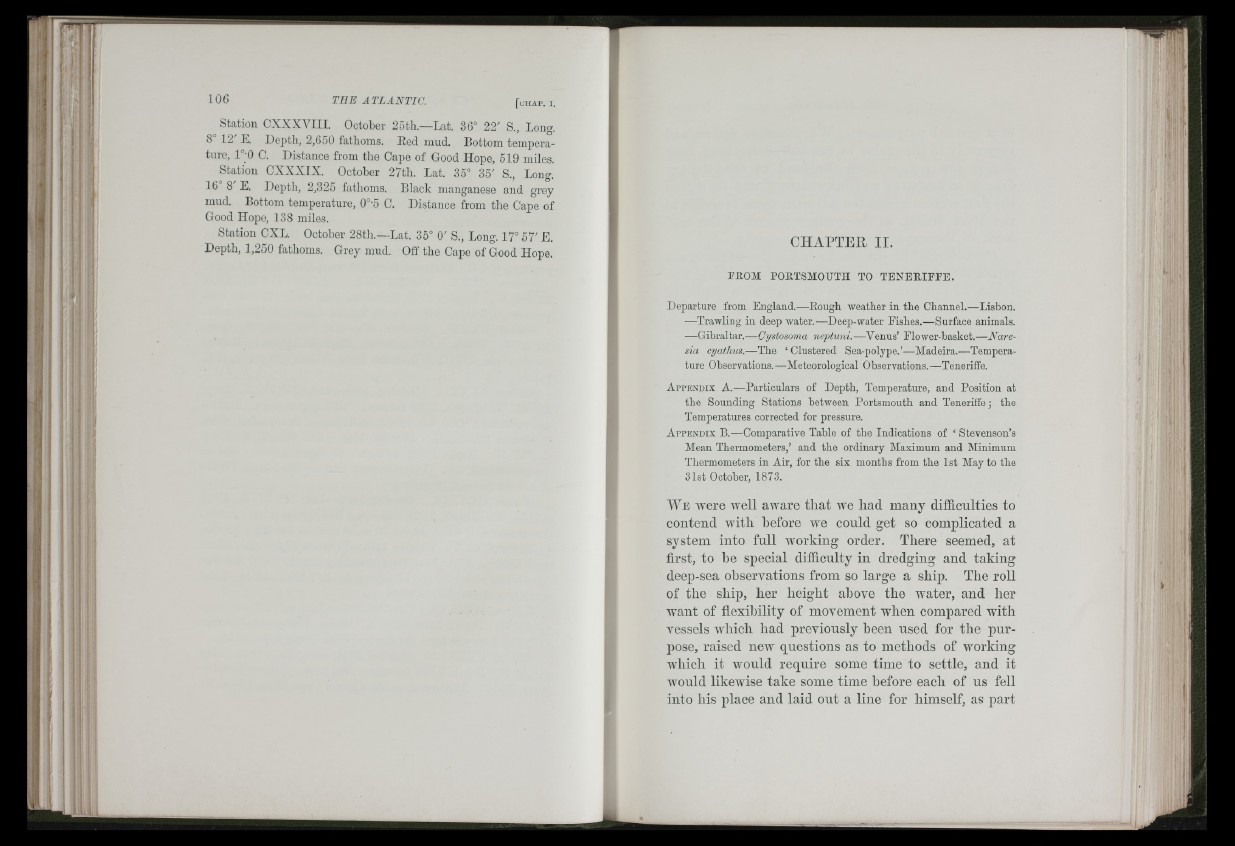
'L i
106
station CXXXVIII. October 25tii.—Lat. 36° 22' S., Lon
8 12 L. Depth, 2,650 fathoms. Red mud. Bottom temperature,
IOC. Distance from the Cape of Good Hope, 519 miles.
Station CXXXIX. October 27th. Lat. 35° 35' S., Long.
16 8 L. Depth, 2,325 fatlioms. Black manganese and grey
mud. Bottom temperature, 0°'5 C. Distance from the Cape of
Good Hope, 138 miles.
Station CXL. October 28th.—Lat. 35° 0' S., Long. 17° 57' E.
Depth, 1,250 fathoms. Grey mud. Off the Cape of Good Hope.
iv-il
i!
CHAPTEH II.
FROM PORTSMOUTH TO T EN E R IF F E .
It
Departure from England.—Rough weather in the Channel.—Lisbon.
—Trawling in deep water.—Deep-water Fishes.—Surface animals.
—Gibraltar.—Cystosoma neptuni.—Venus’ Flower-basket.—Naresia
cyathus.—Tbe ‘ Clustered Sea-polype.’—Madeira.—Temperature
Observations.—Meteorological Observations.—Teneriffe.
A p p e n d ix A .—Particulars of Deptb, Temperature, and Position at
the Sounding Stations between Portsmouth and Teneriffe; the
Temperatures corrected for pressure.
A p p e n d ix B.—Comparative Table of the Indications of ‘ Stevenson’s
Mean Thermometers,’ and the ordinary Maximum and Minimum
Thermometers in Air, for tbe six months from tbe 1st May to tbe
31st October, 1873.
W e were well aware that we had many difficulties to
contend with before we could get so complicated a
system into full working order. There seemed, at
first, to be special difficulty in dredging and taking
deep-sea ohservations from so large a ship. The roll
of the ship, her height ahove the water, and her
want of flexibility of movement when compared with
vessels which had previously heen used for the purpose,
raised new questions as to methods of working
which it would require some time to settle, and it
would likewise take some time before each of us fell
into his place and laid out a line for himself, as part
? s m !